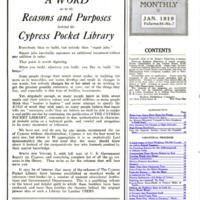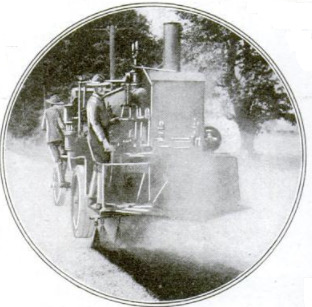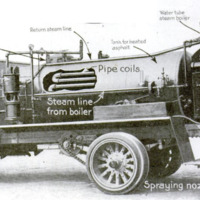U. S. soldiers fastly built roads in France using a machine which could distribute liquid asphalt on the ground
Item
-
Title (Dublin Core)
-
U. S. soldiers fastly built roads in France using a machine which could distribute liquid asphalt on the ground
-
Article Title and/or Image Caption (Dublin Core)
-
How Yankee Ingenuity Built Roads in Devastated France
-
extracted text (Extract Text)
-
WHEN the American troops arrived in France, they
found the military roads near the front in a deplor-
able condition and entirely inadequate for the safe and
rapid transportation of troops and war materials. It be-
came one of first important tasks of the American engineer
troops to build new roads and to repair those already in
existence.
The rapidity with which the Americans built substantial
roads and the thoroughness of their work surprised even the
French, who are noted for their road-building. But our
engineers had at their command the best labor-saving
machinery for road-building. One of these labor-saving
devices is shown in the pictures below. It is an apparatus
for distributing liquid asphalt for binding purposes over
newly finished roads.
The apparatus is mounted in a unit on a special frame
which fits over the frame of an automobile truck, and which
can be removed as an integral unit in one hour by unscrew-
ing the nuts of sixteen bolts which fasten the frame to the
chassis.
The asphalt is carried in a big tank holding 1000 gallons,
and is melted and kept in a liquid condition by a system
of pipes through which steam, generated in a steam-boiler
located at the rear end of the truck, is forced.
Some of the steam generated in the steam-boiler is used
to operate a locomotive air-pump at the front of the tank.
The air compressed by this pump is fed directly into the
tank, and supplies a pressure of one hundred pounds to
the square inch. By this pressure the asphalt,
which is constantly kept at a temperature of
from 150° to 200%, is forced through the
nozzles of the sprayer in the rear and
distributed over a wide strip of the
road-bed.
The air-pump is so arranged that |
by the changing of a few valves it |
a becomes a vacuum-pump. By ex-
hausting the air from the tank the
melted asphalt is sucked into the tank. |
This is an important feature in view of
the great viscosity of the asphaltum
and the difficulty of charging the tank |
with that bituminous substance in any
other way.
-
Language (Dublin Core)
-
eng
-
Date Issued (Dublin Core)
-
1919-01
-
pages (Bibliographic Ontology)
-
58
-
Rights (Dublin Core)
-
Public domain (Google digitized)
-
Archived by (Dublin Core)
-
Davide Donà
-
Marco Bortolami (editor)
 Popular Science Monthly, v. 94, n. 1, 1919
Popular Science Monthly, v. 94, n. 1, 1919




